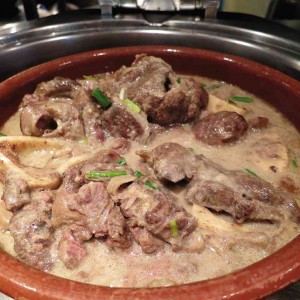
Ever since tourists discovered Boracay, the province of Aklan has been known for the powdery white sand and the pristine beauty of its beaches.
Yet there’s so much more to this Visayan province. There are the mountain ranges, wild rivers and natural springs of Libacao, for instance, where visitors can go hiking, kayaking and bamboo rafting. There’s Salimono Falls in the town of Makato, Agnaga Falls in Malay and, scattered in various parts of the province, mysterious caves to be explored, verdant rolling hills, lush forests, eco-parks and centuries-old churches.
Located in Panay Island, Aklan is also known for its expert weavers, who can turn pineapple fiber into elegant fabric and abaca into native handcrafts. The province can, likewise, lay claim to hosting the mother of all festivals, the yearly Ati-Atihan, where revelers honor the Sto. Niño with street dances and the rhythmic beating of drums.
And then there’s the cuisine. Aklan food recently took center stage in Café Jeepney when Hotel InterContinental partnered with the provincial government of Aklan and Aklan Provincial Tourism Council to showcase the cuisine of this Western Visayan province.
Like all regions, Aklan takes pride in its specialties, among them suman sa ibos (rice cakes) ampao (crispy pop rice), inday inday (sticky rice patties topped with sugar) and tinuom (fish roe wrapped in banana leaves). With coconut trees growing so abundantly, many of their dishes are enriched with coconut milk.
The bulalo steak (beef shanks) served in Café Jeepney, for instance, was simmered in a combination of thick coconut cream and coconut milk. Similarly, a dish of shrimps that was rolled in taro leaves was cooked with coconut milk.
“Aklanons are very fond of gata (coconut milk),” said Arlene Conanan who, along with Jona Bornales and Mylyn Gonzales, helped to prepare the buffet. “Even our vegetables are cooked in gata. It has become a tradition.”
Other flavor enhancers in Aklanon cuisine are lemongrass (used for stuffing lechon) and batuan, a sour fruit incorporated in their version of dinuguan (pork blood stew).
Here’s the Aklanon recipe for bulalo steak in coconut cream.
- 1 k beef shanks, bone-in (bulalo/beef bone marrow)
- 8-10 c water
- 1 medium onion, diced
- 3-4 pcs ginger
- 4 cloves garlic, crushed
- 1 stalk lemongrass, white ends smashed (optional)
- 1 c coconut cream
- 3 c coconut milk
- Salt and pepper
Put the shanks in a deep pot and pour in water. Add diced onion, ginger, garlic and lemongrass. Bring to a boil then reduce heat to a simmer. Let simmer over very low heat for two to three hours or until beef is tender. Make sure there’s always enough water in the pot so beef doesn’t burn.
Remove beef from the broth and set aside. In a large casserole, pour in coconut cream and coconut milk. Bring to a simmer while stirring so mixture becomes smooth. Add the tenderized beef shanks. Season to taste with salt and pepper. Simmer until liquid thickens and beef shanks are heated through. Transfer to a serving dish and serve immediately.
For more tips, recipes and stories, visit author’s blog: www.normachikiamco.com and Facebook fanpage: www.facebook.com/normachikiamco. Follow on Twitter @NormaChikiamco
Cook’s tips:
- Simmer the beef over very low heat so that the marrow doesn’t separate from the bones.
- You can also tenderize the beef shanks in a pressure cooker. Follow manufacturer’s directions.
- If tenderizing the beef shanks in water, skim off the scum that floats on the surface of the water during the tenderizing process.
- Coconut cream is known locally as kakang gata and is obtained from the first pressing of matured coconut meat. Coconut milk is thinner and is obtained from the second or third pressing of coconut meat.
You may also use canned coconut cream and coconut milk.